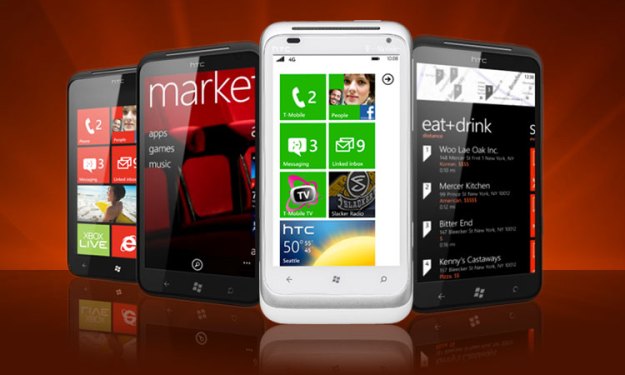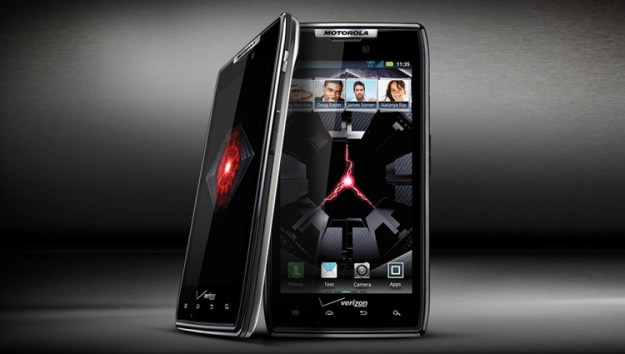
On paper, the Droid Razr is the first phone that has come out, that I can recall, on top of an iPhone launch that is more advanced in nearly every way. It is thinner, it is lighter, faster, has longer battery life, and it is a 4G rather than a 3G phone. Based on specs alone, the Droid Razr obliterates the iPhone 4S, but I doubt many Apple folks will switch.
Interestingly, I’m at an EMC event today and one of the questions to the business audience was on smartphone platforms: The only one they would block? Android.
I think this highlights the long-term competitive problem for Google, and perhaps a possible opportunity for the Windows Phone platform on Nokia.
It isn’t just about the hardware
As this mostly CIO audience pointed out, the iPhone stands out because it’s the best overall solution on the planet. The app store is both the largest and the most aggressively vetted, the breadth of services the most complete, the accessories the most prevalent, and the integration with other things (like cars) the most common.
In addition, it has the most loyal audience, and Apple traditionally has both the highest customer satisfaction and the highest customer advocacy scores (people who will actively promote Apple products). Representatives from company after company said they recently enabled Mac and iPad use in their firms, and were immediately overwhelmed by demand they didn’t have any idea existed. Clearly a cautionary tale for Microsoft and Windows.
Apple seems to spend more time thinking through the complete solution, and in caring for its users, which gives it a sustaining advantage.
Moldy Apples
Apple’s many benefits aside, it is hard to ignore the fact that the Razr is more advanced than the iPhone 4S in almost every way in terms of hardware. This suggests that Apple’s vertical integration is starting to work against it, particularly on the chip that powers the iPhone 4S, which is clearly a generation behind the Razr’s. Apple does buy its cellular radios from third parties, but it is clearly using an older generation here as well, on the argument that 4G was just too power-intensive to use. However, the fact that the Razr has this technology, and is both lighter and has longer battery life, just makes it look like Apple is trying to cover up that it can no longer compete on hardware.
Part of the reason folks buy iPhones is because they believe them to be technologically superior. This round, they aren’t.

Perplexing Androids
Even with superior hardware, Android has a sustaining problem as well. It has gained the perception of being relatively hard to use, and much more prone to security problems than any other major platform. This is what delayed Netflix on the phone, and why the business folks I’m sharing the room with are blocking it. The most recent smartphone attack was a hacked Netflix app that functioned as a Trojan. It contained a key logger, and it scared the hell out of business buyers.
It doesn’t matter how good the hardware is if folks become scared of the software.
Enter Mango
Both Apple and Google, who currently dominate the smartphone space, have major exposures. Apple is overmatched by its reliance on its own hardware, and Google is overmatched by its open and kit-like approach to products, which results in a less desirable solution. This suggests that Microsoft, which has a hardware solution like Google’s and has packaged it more closely to Apple’s, should have a massive opportunity here.
It should be no surprise that when the IT folks who were blocking Android were asked if they would allow Mango, they said yes. It was sad to note that when they were asked if anyone wanted a Mango phone, they said no. Microsoft is massively underfunding demand generation for Mango devices, and several attendees commented that they couldn’t believe that Microsoft’s market share actually dropped when Windows Phone 7 shipped. This leaves the door open for Nokia, which hasn’t yet entered a Windows Phone product to pull an Apple. We’ll shortly see if Nokia will step up.
Guest contributor Rob Enderle is the founder and principal analyst for the Enderle Group, and one of the most frequently quoted tech pundits in the world. Opinion pieces denote the opinions of the author, and do not necessarily represent the views of Digital Trends.
Editors' Recommendations
- Best iPhone deals: Save on iPhone 15, iPhone 15 Pro Max and more
- How to find your lost phone (tips for iPhone and Android)
- Why you should buy the iPhone 15 Pro instead of the iPhone 15 Pro Max
- iPhone SE 4: news, rumored price, release date, and more
- 3 reasons why I’ll actually use Anker’s new iPhone power bank


